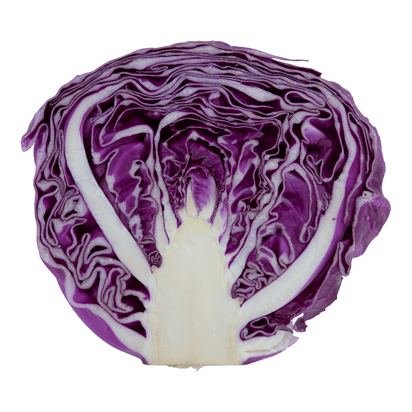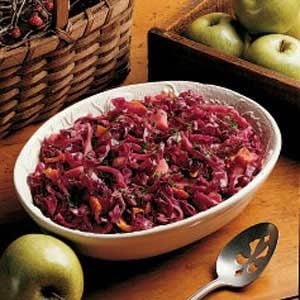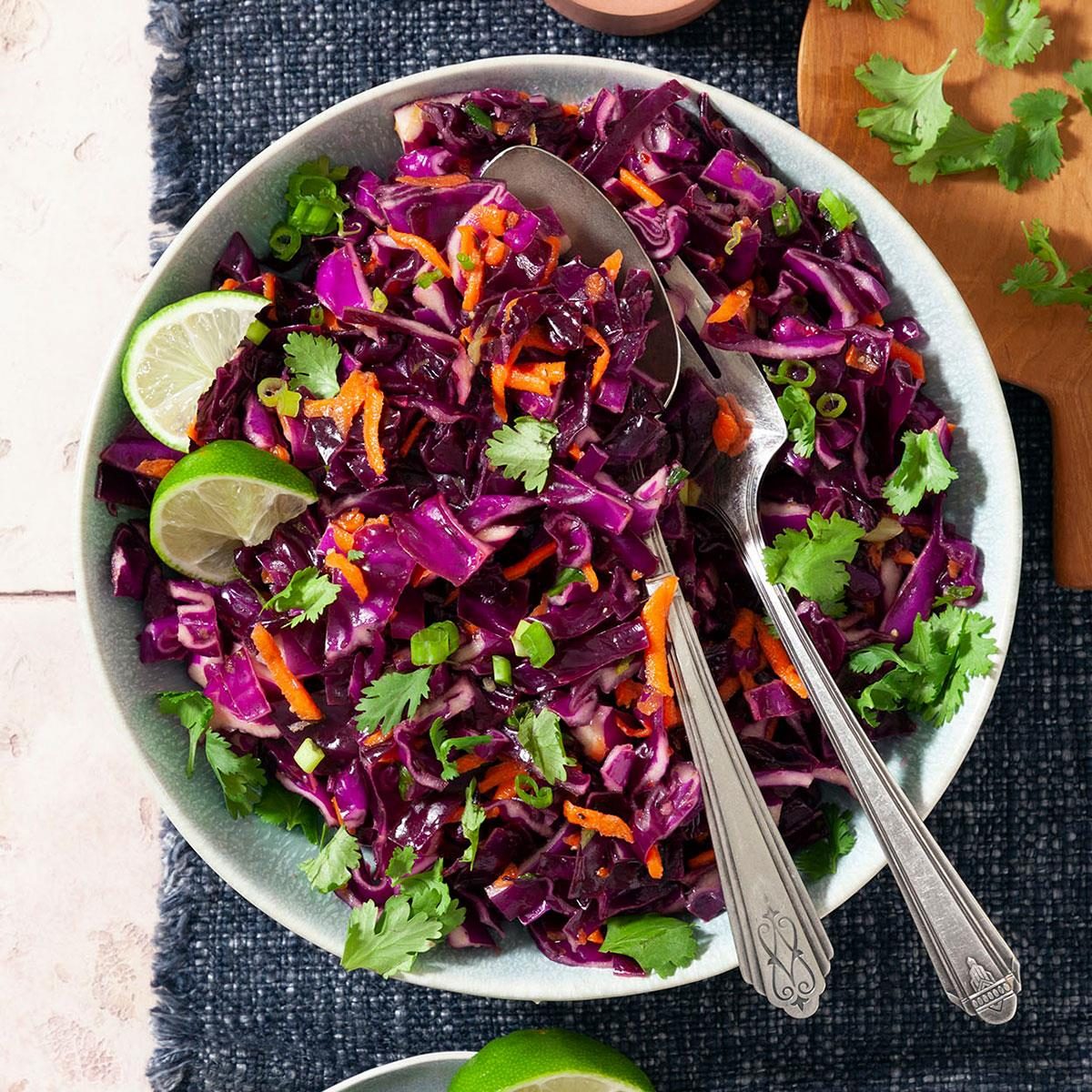Red Cabbage: Important Facts, Health Benefits, and Recipes
Explore the world of red cabbage (also known as purple cabbage) with our ultimate guide, covering its history, health benefits, culinary uses, and creative ways to incorporate this nutritious and versatile ingredient into your meals.

Best Red Cabbage Recipes
-

-

-

-

-

-
:max_bytes(150000):strip_icc()/__opt__aboutcom__coeus__resources__content_migration__simply_recipes__uploads__2010__12__red-cabbage-chestnuts-horiz-b-1600-493642bf8d604aad8ac80e910aa5e5f7.jpg)
-

-
:max_bytes(150000):strip_icc()/polish-braised-red-cabbage-recipe-1137527-hero-01-5c6edc93c9e77c000107b534.jpg)
-
![Traditional German Red Cabbage (Rotkohl) Recipe Image]()
-
![Single Jar Sauerkraut Recipe Image]()
-
![Beef Sauerbraten with Red Cabbage and Pretzel Dumplings Recipe | Cook the Book Image]()
-
![Broiled Strip Steak With Mushrooms and Chive Sour Cream Recipe Image]()
-
![Super-Simple Tangy Buttermilk Coleslaw Recipe Image]()
-
![Grilled Bratwurst With Warm German Potato Slaw Recipe Image]()
-
![Serious Heat: Kogi-Inspired Bulgogi Tacos with Spicy Slaw Recipe Image]()
-
![Grilled Korean Bulgogi Burgers With Kimchi Mayo and Pickled Daikon Recipe Image]()
-
![Red Cabbage Salad With Roasted Cipollini Onions Recipe Image]()
-
![Grilled Cabbage with Peanut Sauce Recipe Image]()
-
![Easy Red Cabbage, Apple and Mustard Recipe Image]()
-
![Red Cabbage With Bacon and Apples Image]()
-
![Instant Pot Braised Red Cabbage Recipe Image]()
-
![Mojo-Style Chicken Thighs with Cilantro Slaw and Garlic-Lime Pepitas Image]()
-
![Pollo Togarashi y Glaseado de naranja con Vegetales rostizados con Miso y Pera marinada Image]()
-
![Togarashi Vegetables & Chicken Thighs with Creamy Ponzu-Ranch Dressing Image]()
-
![Togarashi Chicken & Orange Glaze with Miso-Roasted Vegetables & Marinated Pear Image]()
-
![Vegetales Togarashi y Muslos de Pollo con Aderezo cremoso Ponzu-Ranch Image]()
-
![Red Cabbage With Bacon Image]()
-
![Sauerbraten Soup Image]()
-
![Red Cabbage with Apples Image]()
-
![Cilantro Lime Slaw Image]()
-
![Togarashi Chicken & Orange Glaze with Miso-Roasted Vegetables & Marinated Pear Image]()


:max_bytes(150000):strip_icc()/7846462364_64c4edf30a_o-58a47bd23df78c475875225b.jpg)
/white-cabbage-sauerkraut-884678550-6bc628803a78434c99e0095dc3c8db7d.jpg)
:max_bytes(150000):strip_icc()/__opt__aboutcom__coeus__resources__content_migration__serious_eats__seriouseats.com__recipes__images__20101012sauerbraten20-1bc6b3b5bba34f089a9ac1265ca981df.jpg)
:max_bytes(150000):strip_icc()/__opt__aboutcom__coeus__resources__content_migration__serious_eats__seriouseats.com__2018__08__20180726-MHT-broiling-strip-steak-mushrooms-sour-cream-chives-finished-overhead-vicky-wasik-6--71fe82f1da714feaa046c4ce068c8d9b.jpg)
:max_bytes(150000):strip_icc()/__opt__aboutcom__coeus__resources__content_migration__serious_eats__seriouseats.com__recipes__images__2015__08__20150815-buttermilk-slaw-1-f7bbd15ae7344322b99c69c1d07b8432.jpg)
:max_bytes(150000):strip_icc()/__opt__aboutcom__coeus__resources__content_migration__serious_eats__seriouseats.com__recipes__images__2015__06__20150608-grilled-bratwursts-german-potato-slaw-dog-morgan-eisenberg-5990fd25c20e42a7a893ce4a84c554ce.jpg)
:max_bytes(150000):strip_icc()/__opt__aboutcom__coeus__resources__content_migration__serious_eats__seriouseats.com__recipes__images__20090804-tacos-c065aee663f14170832cbb59c1919897.jpg)
:max_bytes(150000):strip_icc()/__opt__aboutcom__coeus__resources__content_migration__serious_eats__seriouseats.com__recipes__images__2017__06__20170617-bulgogi-burger-matt-clifton-1-b9769887cb1e4a4a8d9e9922bbabcace.jpg)
:max_bytes(150000):strip_icc()/__opt__aboutcom__coeus__resources__content_migration__serious_eats__seriouseats.com__recipes__images__2016__11__20161107-Red-Cabbage-Salad-Cipollinis-03edit-74b7572963a440d99fe3d5b828d237d6.jpg)
:max_bytes(150000):strip_icc()/Simply-Recipes-Grilled-Cabbage-LEAD-03_badge-f62c52c461514443b383517a3ebd849e.jpg)
/red-cabbage-mustard-58a7180f3df78c345b7bf304.jpg)
:max_bytes(150000):strip_icc()/red-cabbage-apple-12009-5840a0245f9b5851e5c215df.jpg)
:max_bytes(150000):strip_icc()/Instant-Pot-Braised-Red-Cabbage-6823925-hero-01-dd5463a485bc4eb29903ac2b596bf620.jpg)







